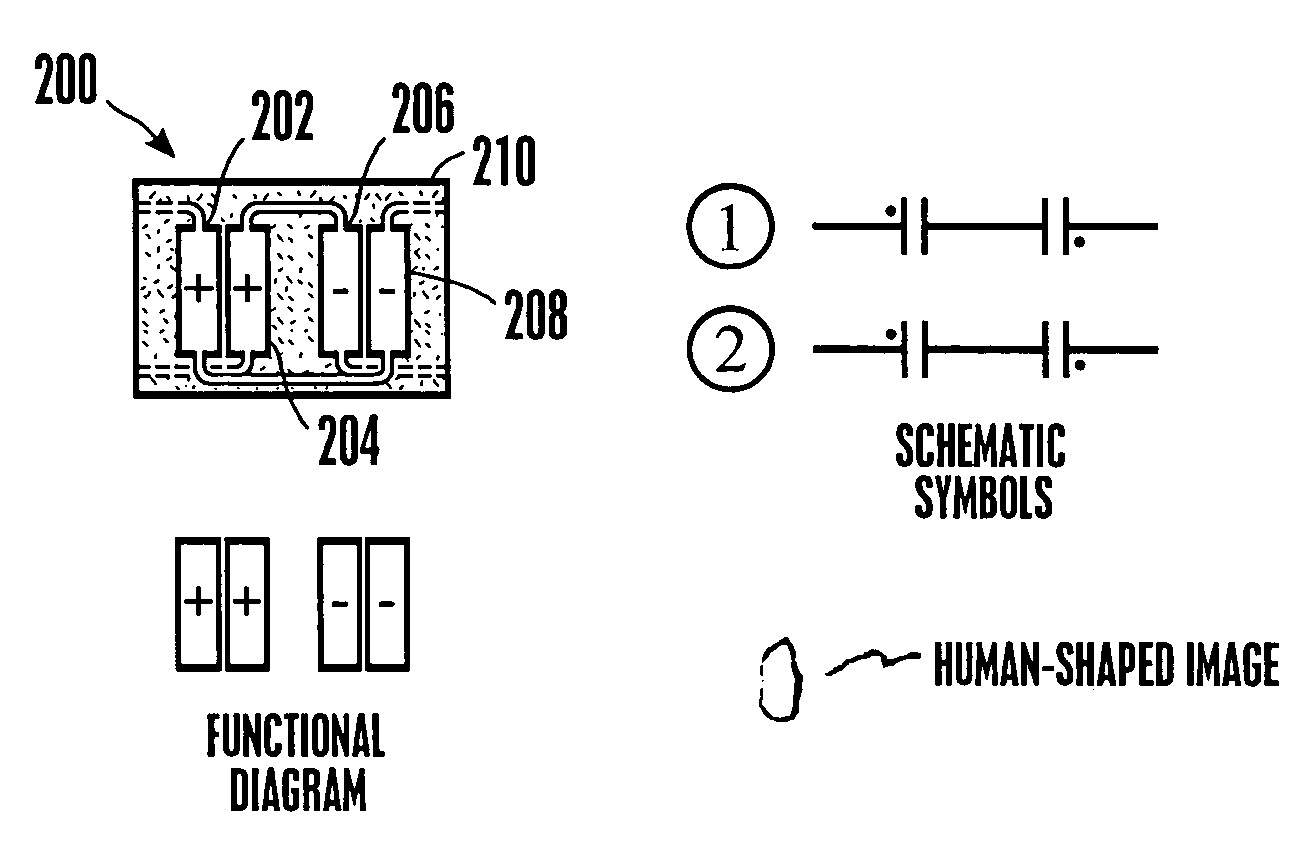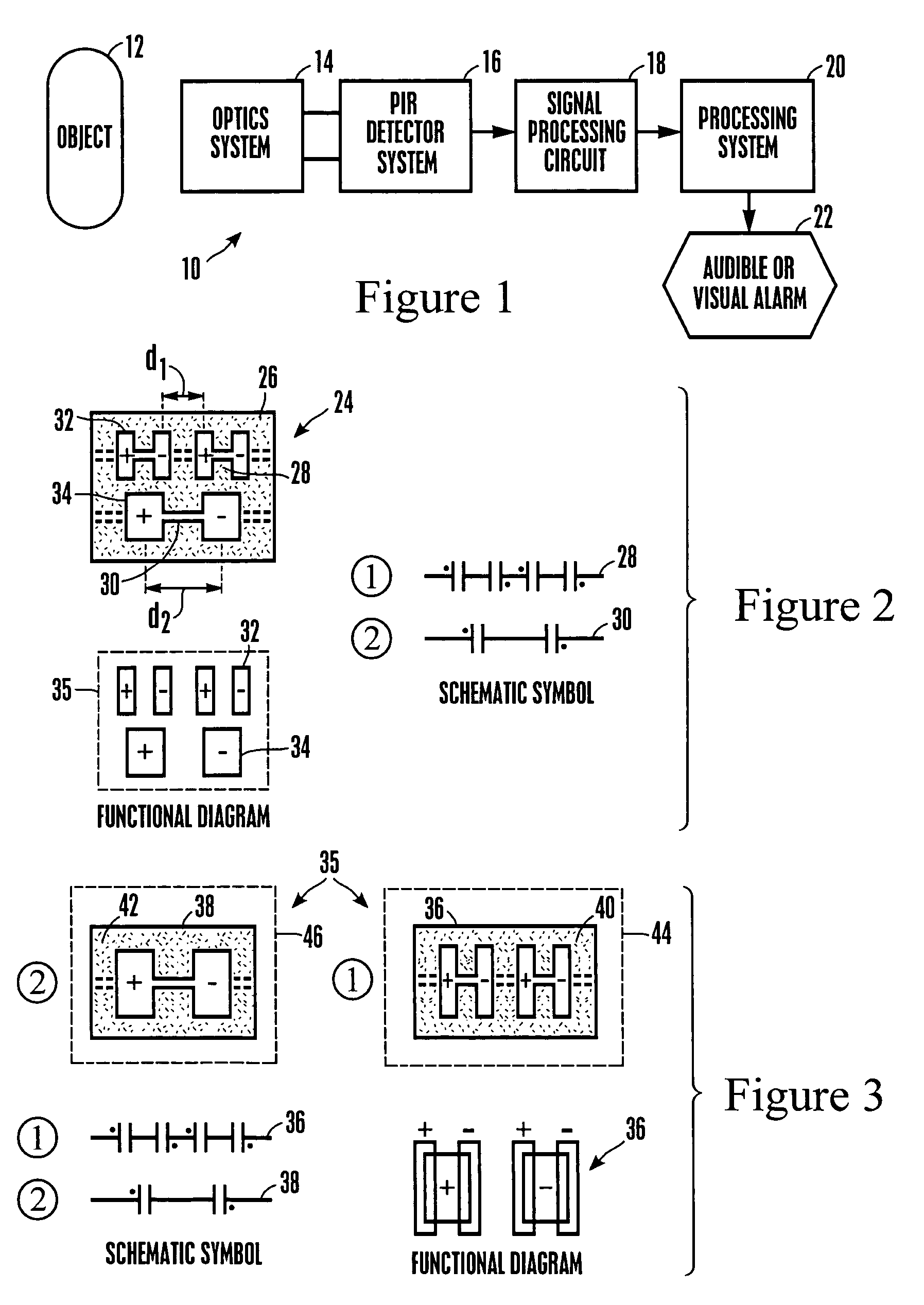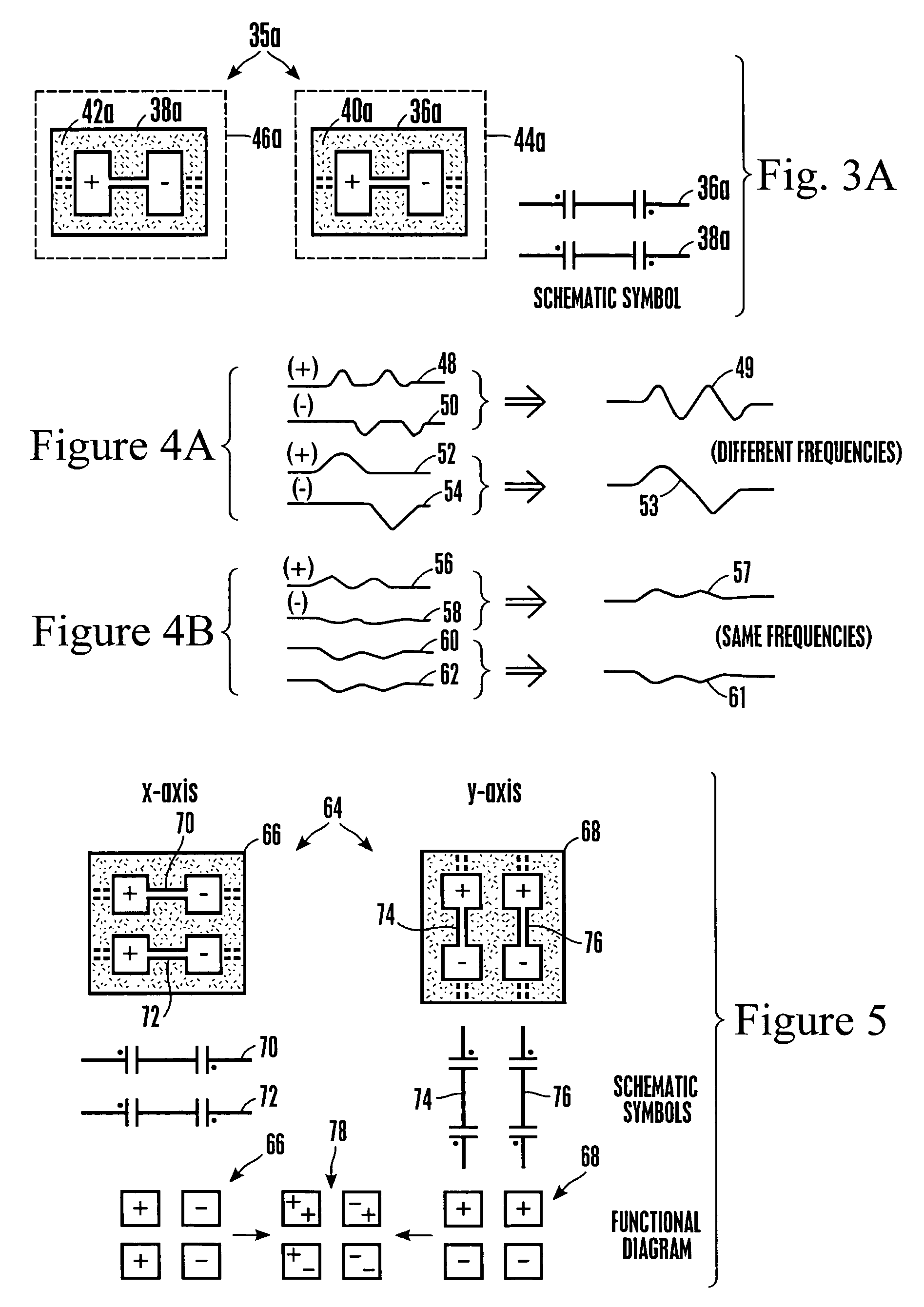PIR motion sensor utilizing sum and difference sensor signals
a motion sensor and sum and difference technology, applied in the field of motion sensors, can solve the problems of low accuracy of motion sensors, and high cost of cameras, and achieve the effect of reducing the probability of motion
- Summary
- Abstract
- Description
- Claims
- Application Information
AI Technical Summary
Benefits of technology
Problems solved by technology
Method used
Image
Examples
Embodiment Construction
[0045]Referring initially to FIG. 1, a system is shown, generally designated 10, for detecting a moving object 12, such as a human. The system 10 includes an optics system 14 that can include appropriate mirrors, lenses, and other components known in the art for focussing images of the object 12 onto a passive infrared (PIR) detector system 16. The disclosure below discusses various embodiments of the PIR detector system 16. In response to the moving object 12, the PIR detector system 16 generates a signal that can be filtered, amplified, and digitized by a signal processing circuit 18, with a processing system 20 (such as, e.g., a computer or application specific integrated circuit) receiving the signal and determining whether to activate an audible or visual alarm 22 or other output device such as an activation system for a door, etc. in accordance with the flow charts herein.
[0046]Having described the overall system architecture, reference is now made to FIG. 2, which shows a fir...
PUM
 Login to View More
Login to View More Abstract
Description
Claims
Application Information
 Login to View More
Login to View More - R&D
- Intellectual Property
- Life Sciences
- Materials
- Tech Scout
- Unparalleled Data Quality
- Higher Quality Content
- 60% Fewer Hallucinations
Browse by: Latest US Patents, China's latest patents, Technical Efficacy Thesaurus, Application Domain, Technology Topic, Popular Technical Reports.
© 2025 PatSnap. All rights reserved.Legal|Privacy policy|Modern Slavery Act Transparency Statement|Sitemap|About US| Contact US: help@patsnap.com



